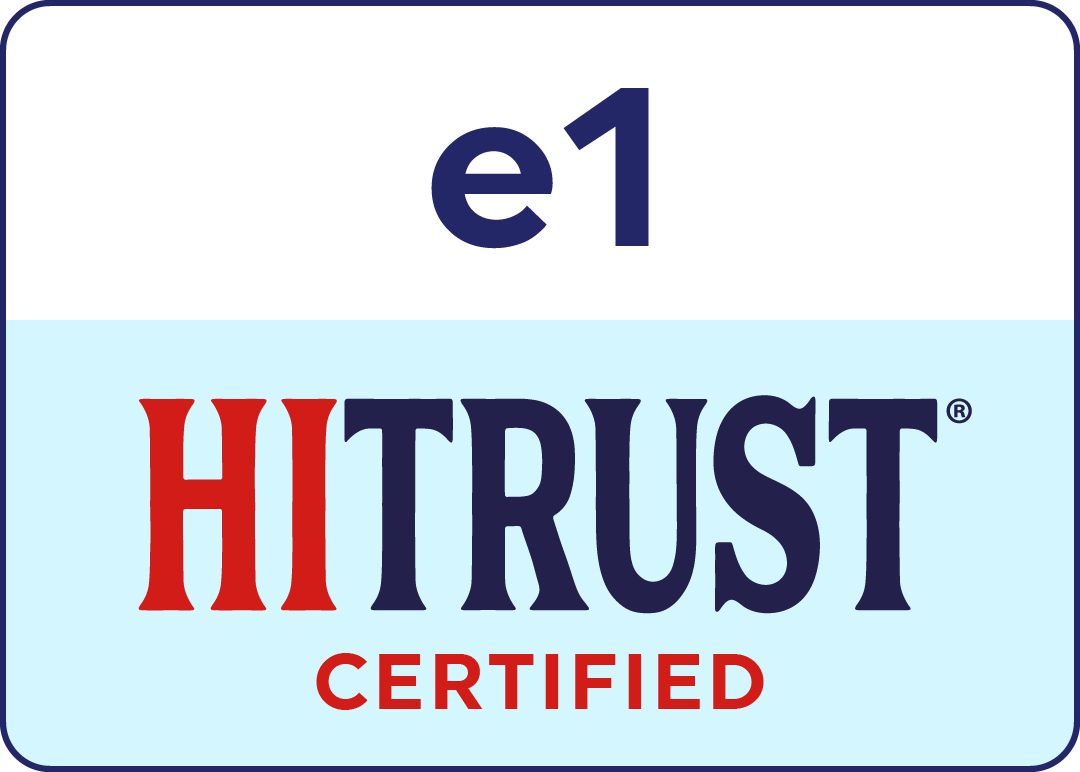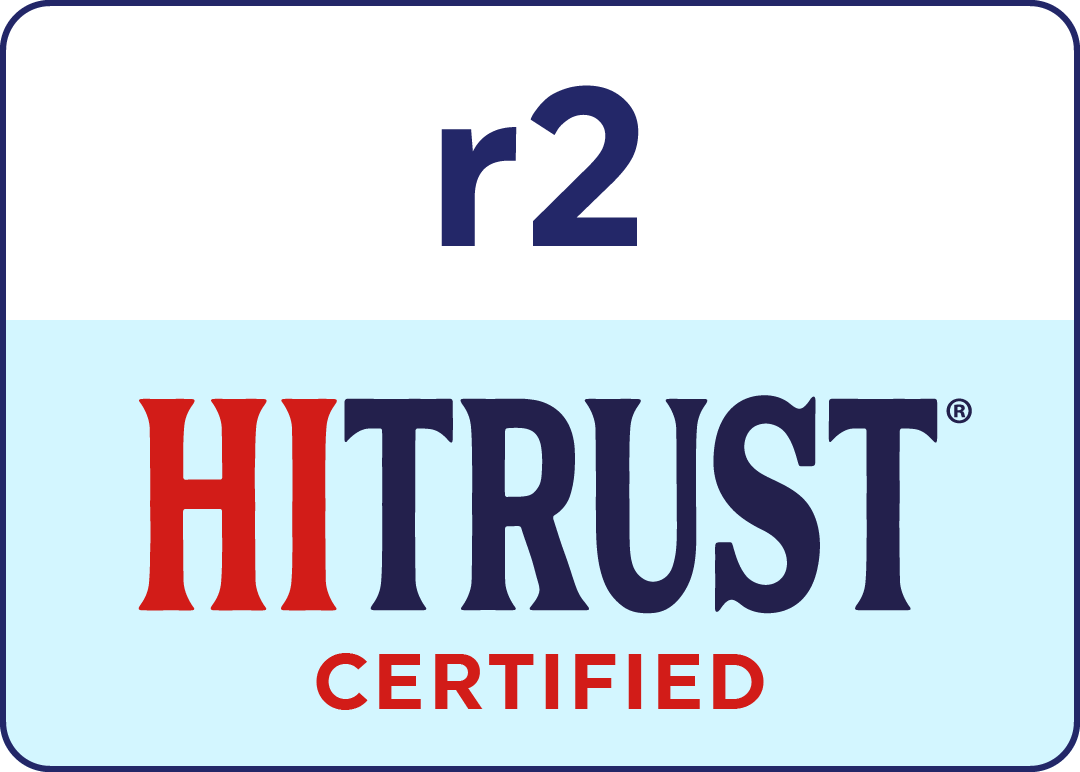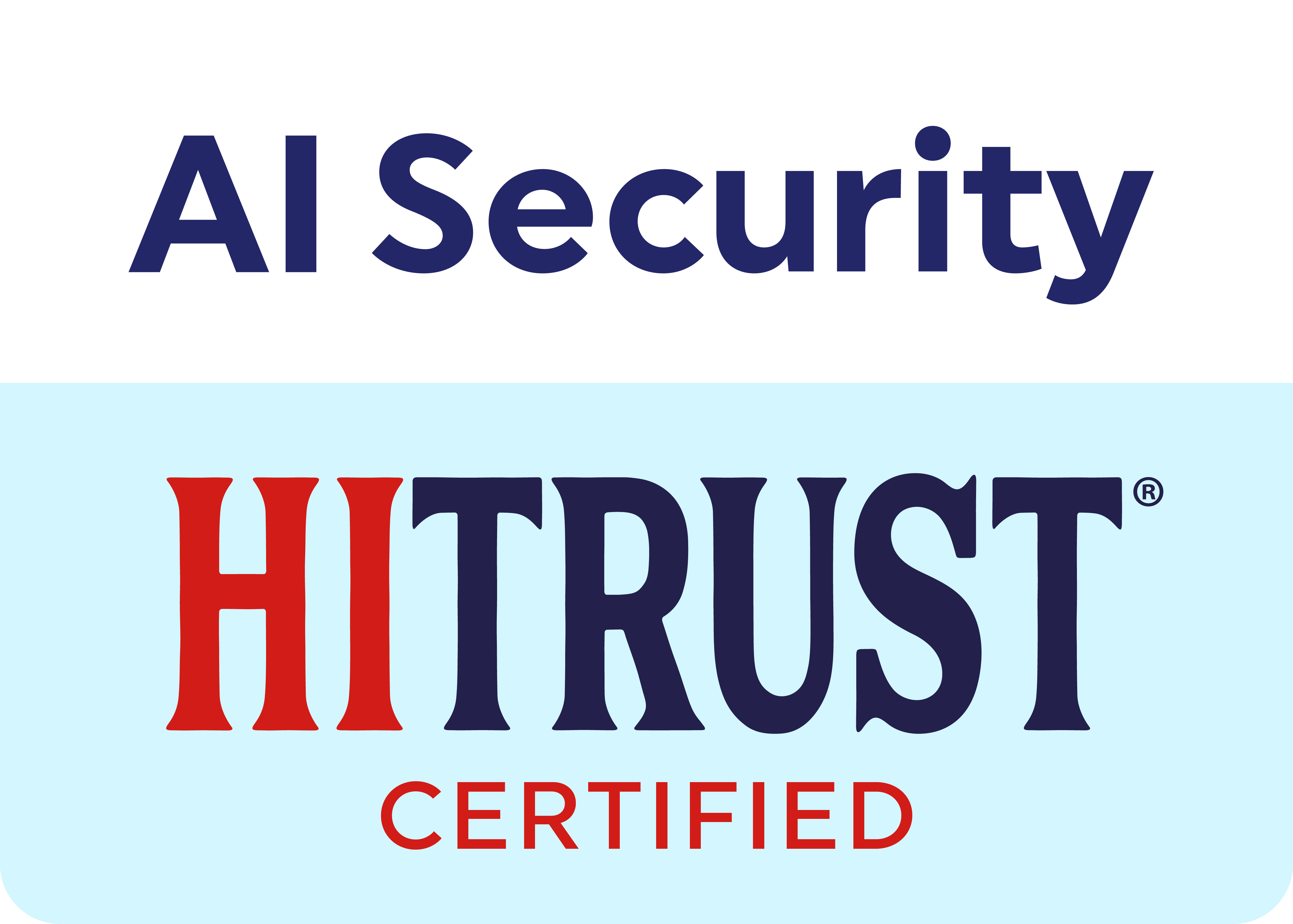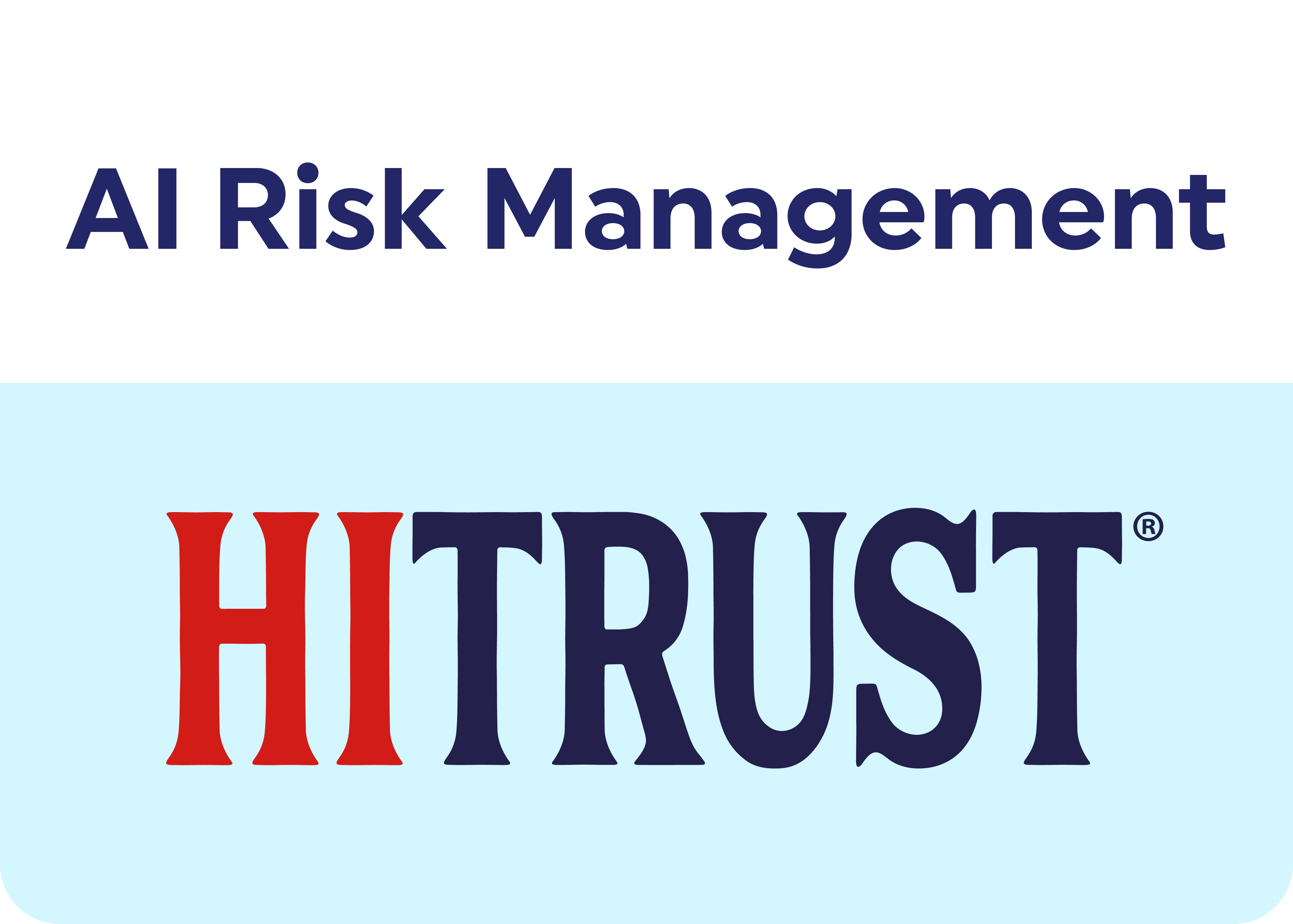Cybersecurity Assessments and Certifications
HITRUST offers a traversable portfolio of three core cybersecurity assessments and certifications based on an organization’s size, needs, and risk objectives. Because the e1, i1, and r2 are all built on the HITRUST Framework (HITRUST CSF®), work from previous assessments can be applied to more comprehensive assessments. Organizations working to attain certification can also inherit existing controls from their certified cloud service providers.
Recognizing the novel security threats introduced by AI technology, HITRUST now also offers the first of their kind AI security and AI risk management assurance products. Whether your organization is developing, deploying, or utilizing AI, the comprehensive, prescriptive control specifications and methodology in these solutions will enable you to validate and demonstrate your security and risk mitigation stance.

Which assessment and certification is right for your organization?
HITRUST e1 - 1-year Validated Assessment: Foundational Cybersecurity
The e1 assessment and certification is ideal for startups and companies with limited risk profiles or less complexity. It allows for an entry-level validated assessment and certification based on 44 foundational security controls. Organizations can also build upon these controls as a step toward attaining the more comprehensive i1 or r2 certifications.

HITRUST i1 - 1-year Validated Assessment: Leading Security Practices
The i1 assessment and certification is a good fit for organizations with robust information security programs already in place that are ready to demonstrate leading security practices. The i1 offers a more comprehensive assurance than the e1, with more controls included. Work done to attain an active i1 certification can be applied toward attaining an r2 certification.
HITRUST r2 - 2-year Validated Assessment: Expanded Practices
The r2 assessment and certification is best suited for organizations that need to demonstrate regulatory compliance with authoritative sources like HIPAA, the NIST Cybersecurity Framework, and dozens of others or that require expanded tailoring of controls based on other identified risk factors. It is the most comprehensive and robust HITRUST assessment.

AI Security Assessment and Certification
The AI Security Assessment is designed to provide AI platform and service providers with relevant, prescriptive, practical security controls and methodology to confidently adopt and secure AI technologies. It supports shared responsibility inheritance and when paired with an e1, i1, or r2, enables organizations to address multiple compliance needs within a streamlined solution.

AI Risk Management Assessment
The HITRUST AI Risk Management Assessment offers detailed insights, based on 51 relevant and practical AI risk management controls. Harmonized with ISO 23894 and NIST AI RMF, this assessment provides a single, efficient control specification that allows organizations to understand and report on their performance in ISO and NIST terms.

Insights Reports
HITRUST Insights Reports translate HITRUST assessment results into the language of specific compliance standards, such as HIPAA or PHIPA, enhancing transparency and simplifying communication with stakeholders. Our growing list of Insights Reports helps reduce redundant compliance efforts and costs, while making it easier to communicate and demonstrate your security posture to those who do not yet accept or fully understand HITRUST’s standard reports.
-1.png)
NIST 2.0
HITRUST NIST CSF 2.0 Certification is an add-on to r2 assessments, providing organizations with a user-friendly report that showcases their alignment with NIST CSF 2.0. With detailed insights and a clear presentation, it’s a powerful tool that translates the results of your r2 assessment to demonstrate compliance with NIST CSF 2.0.
Confidence You Can Count On
Thousands of companies across industries and throughout the world rely on HITRUST® assessments to provide assurances that they have adequate security and privacy controls in place to help manage and mitigate cybersecurity threats and comply with ever-changing regulations.
The reason is that HITRUST assessments and certifications prove that your organization is taking the most proactive approach to data protection and cybersecurity.
Earning a HITRUST certification sends a signal to regulators, customers, and stakeholders that they can trust the strength of your cybersecurity and data protection program. It’s no wonder that so many organizations don’t just request but require a HITRUST certification from vendors and third-party service providers for security and privacy assurances.
Our Assessment Process
By standardizing the approach to risk management, we make the
assessment process easier and more reliable.
Here's How:
- We offer organizations three assessment types based on their risk profile and risk maturity.
- Organizations reuse controls as they move from one assessment to the next.
- Our methodology provides transparency, accuracy, consistency, and integrity.
- Organizations can share and analyze results securely through our Results Distribution System® (RDS).
- Our control maturity model provides accurate scoring of controls rather than an opinion-based pass/fail model.
The Benefits of HITRUST Certification
HITRUST certification provides the highest levels of trust and confidence
to your organization and your stakeholders that you are meeting the
highest standards in information protection.
Here's Why:
- Organizations can save time, money, and resources by streamlining their assurance journey through inheritance.
- Your organization can differentiate itself as a trusted vendor during competitive proposal and contracting reviews.
- Our process reduces the time and resources required to respond to third-party questionnaires.
- You can increase awareness of your organization’s relative exposure, inherent risk, current security posture, and the maturity of your information risk management program.
- Certification could lead to savings on cybersecurity insurance premiums.
- One assessment can be used to meet multiple compliance requirements.
Why choose HITRUST?
Delivers Cyber Threat-Adaptive Assessments
Delivers Cyber Threat-Adaptive Assessments
Proactively defends against the latest cyber threats, including ransomware and phishing
Expands and Aligns Assessment Portfolio
Expands and Aligns Assessment Portfolio
Covers broad assurance needs for different risk levels and compliance requirements, providing greater assurance reliability than other assessment options
Enables Traversable Assessment Journey
Enables Traversable Assessment Journey
Allows for higher assurances by reusing the work in previous HITRUST assessments and sharing common control requirements and inheritance
Reduces Time and Effort
Reduces Time and Effort
Ensures the most relevant controls are in place while removing redundancy
Expands Authoritative Sources
Expands Authoritative Sources
Updates authoritative sources automatically through the power of AI

External Assessors
External Assessors are organizations that have been approved by HITRUST to perform assessments that align with the HITRUST Framework (HITRUST CSF). Choosing the right partner is critical for the success of your certification efforts.